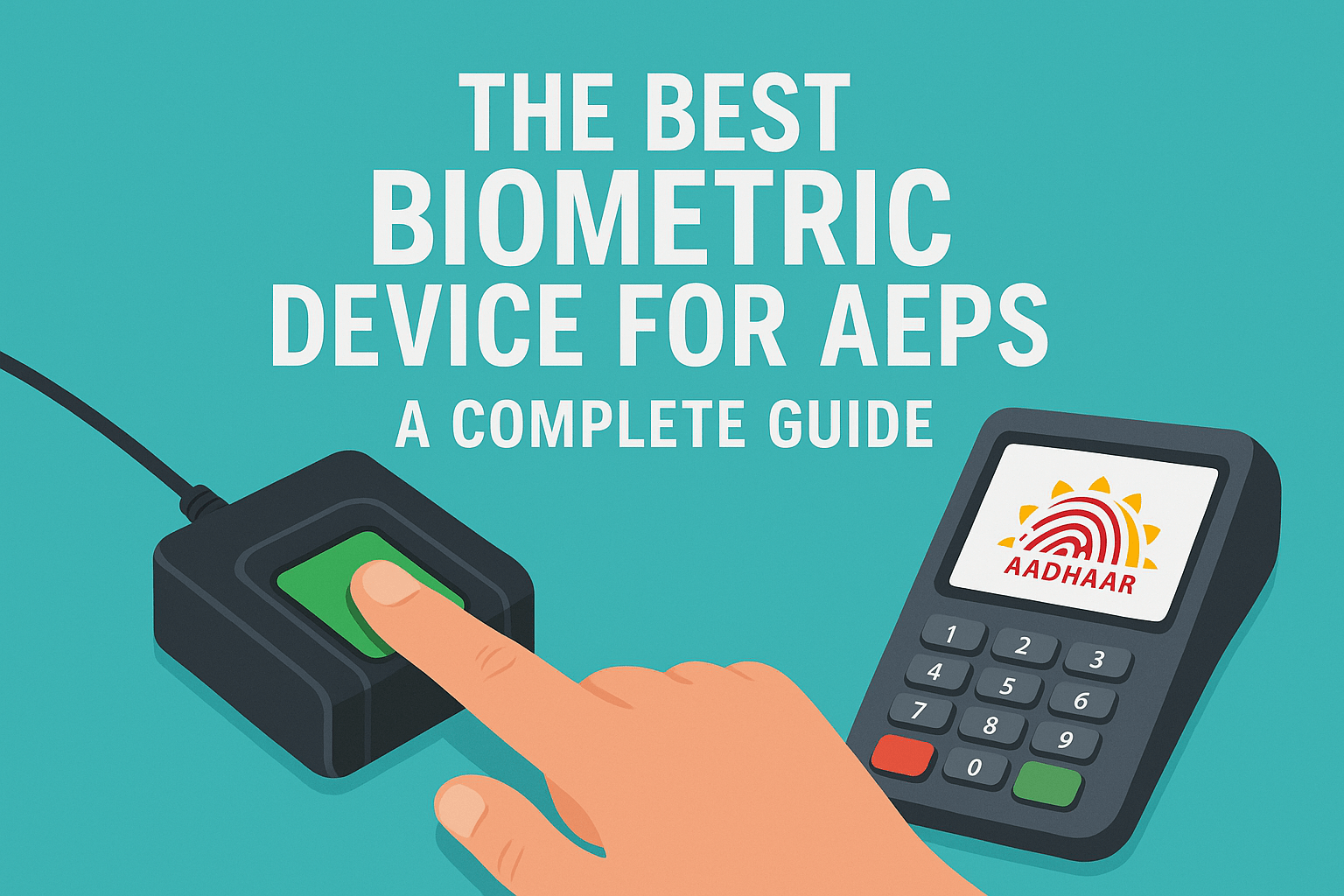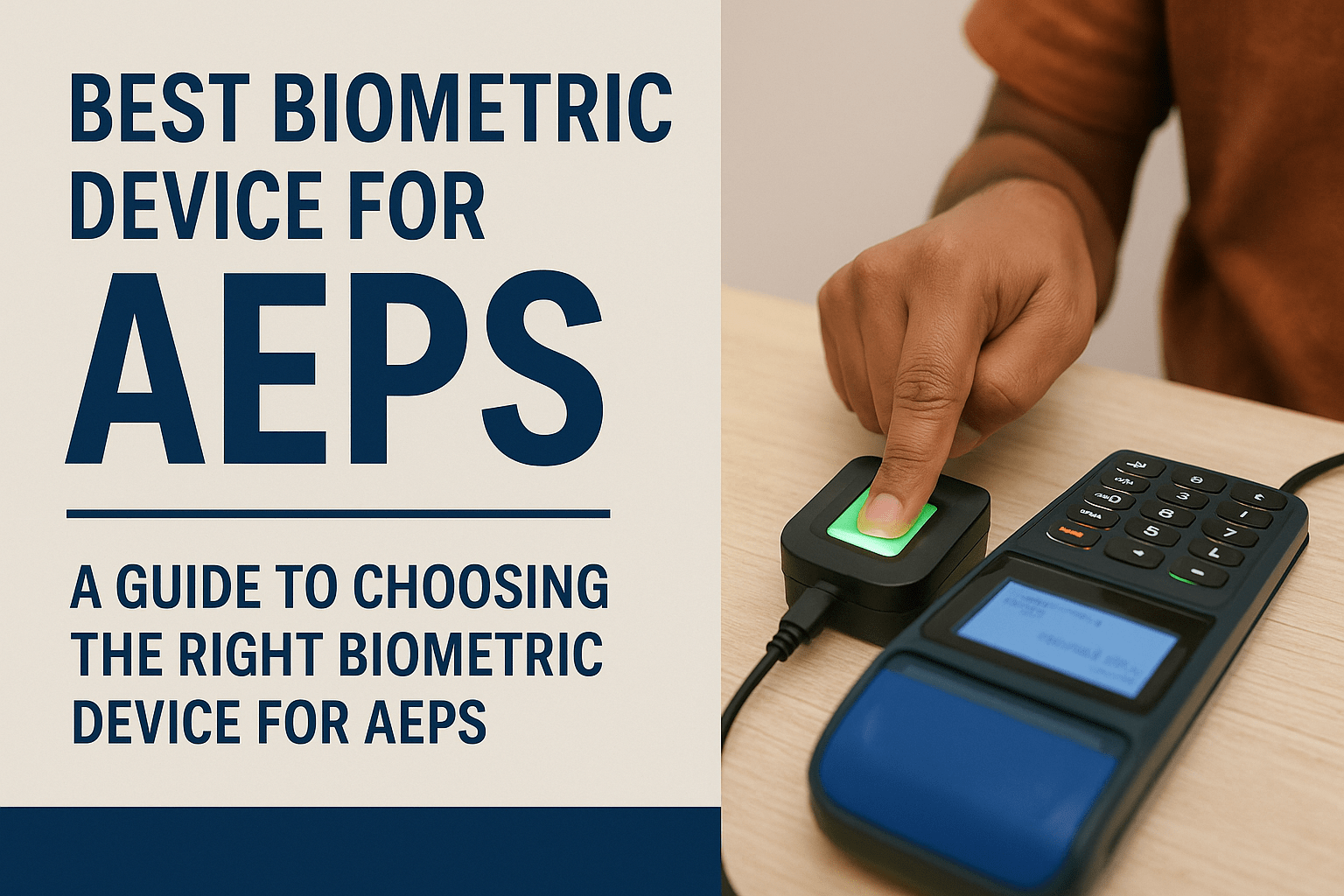In the rapidly evolving landscape of Indian banking and (Best Biometric Device for AEPS) financial inclusion, the Aadhaar Enabled Payment System (AEPS) has emerged as a revolutionary force. It allows millions of citizens to perform basic banking transactions—like cash withdrawal, deposit, and balance inquiry—using only their Aadhaar number and fingerprint authentication. At the very heart of this seamless transaction lies a single, critical piece of hardware: the biometric device. But with a market flooded with options, how do you choose the best biometric device for AEPS? This guide cuts through the noise to give you a clear, expert-backed answer.
Understanding the Non-Negotiable: STQC Certification
Before we even discuss brands or models, there is one absolute, non-negotiable requirement. Any biometric scanner used for AEPS transactions must be certified by the Standardisation Testing and Quality Certification (STQC) Directorate, a body under the Ministry of Electronics and Information Technology (MeitY).
Why is this so crucial?
The STQC certification is a rigorous testing process that ensures the device:
-
Interoperability: It can accurately read and authenticate fingerprints from the vast UIDAI (Unique Identification Authority of India) database.
-
Security: It meets stringent security protocols to prevent fraud and data theft.
-
Reliability: It performs consistently in various real-world conditions (e.g., dry/wet fingers, dusty environments).
Using a non-STQC certified device for AEPS is not just ineffective; it’s non-compliant. Your transactions will simply fail. Therefore, the “best” device is, first and foremost, an STQC-certified one.
Key Features to Look for in an AEPS Biometric Device
Beyond certification, several practical features determine the quality, durability, and user experience of the device.
1. Type of Sensor Technology:
-
Optical Sensors: The most common and cost-effective. They work by capturing a 2D image of the fingerprint. While good for general use, they can be fooled by high-quality prints and may struggle with very dry or worn-out fingerprints.
-
Capacitive Sensors: These are more advanced and secure. They use arrays of tiny capacitor circuits to create a 3D image of the fingerprint. They are harder to spoof and often perform better with slightly degraded fingerprints. For high-volume, critical AEPS operations, capacitive sensors are generally preferred.
2. Connectivity:
-
USB: The standard connection for desktop computers and laptops. It’s plug-and-play and universally compatible.
-
Bluetooth: Offers wireless freedom, which is a massive advantage for Business Correspondents (BCs) and agents who are always on the move. It allows them to connect the scanner to a smartphone or tablet, turning it into a portable micro-ATM.
3. Ruggedness and Build Quality:
AEPS is often deployed in rural and semi-urban areas. The device must be built to withstand dust, minor drops, and constant transportation. A metal or high-quality, thick plastic body is a significant plus.
4. Battery Life (for Bluetooth models):
For mobile agents, a device that can last a full day of transactions (often 8-10 hours) on a single charge is essential. Look for models with a proven track record of good battery performance.
5. Price and Warranty:
Balance your budget with reliability. A slightly more expensive device from a reputable brand with a solid warranty (e.g., 1-2 years) is a better investment than a cheap, unknown brand that might fail in six months, disrupting your business.

Top Contenders for the Best Biometric Device for AEPS
Based on market share, reliability, and user reviews, here are some of the top-performing STQC-certified devices:
1. Mantra MFS100
A true veteran and arguably the most widely used fingerprint scanner in India for Aadhaar-based applications.
-
Why it’s great: Extremely reliable, proven track record over many years, excellent software compatibility, and widely supported by all AEPS and banking applications. It’s the workhorse of the industry.
-
Sensor: Optical
-
Connectivity: USB
-
Best for: Fixed locations, bank kiosks, and agents who prioritize proven reliability over wireless features.
2. Morpho SensePrint
Morpho (now part of the IDEMIA group) is a global leader in biometric technology, and their devices are known for superior accuracy.
-
Why it’s great: Often features advanced capacitive sensors, providing high authentication accuracy even with challenging fingerprints. They are built to last and are very secure.
-
Sensor: Often Capacitive (check specific model)
-
Connectivity: USB and Bluetooth models available.
-
Best for: Those who need top-tier accuracy and are willing to invest in a premium device.
3. SecuGen Hamster Pro
Another highly popular and trusted global brand known for its durable hardware and high-quality optical sensors.
-
Why it’s great: Excellent image quality, very rugged build (often with a metal casing), and strong driver support. It’s known for its durability in tough environments.
-
Sensor: Optical
-
Connectivity: USB and Bluetooth models (like the Hamster Air) available.
-
Best for: Harsh environments and users who need a tough, no-nonsense scanner.
4. Startek FM220
A strong competitor that offers a great blend of performance and value.
-
Why it’s great: Reliable performance, good compatibility, and often competitively priced. It’s a solid choice that does the job well without any fuss.
-
Sensor: Optical
-
Connectivity: USB
-
Best for: Those looking for a reliable, budget-friendly option for standard AEPS operations.

The Verdict: Which One is the Best for You?
So, which is the absolute best biometric device for AEPS? The answer depends on your specific use case:
-
For the Mobile Business Correspondent (BC): A Bluetooth-enabled device is non-negotiable. The Morpho SensePrint BT or the SecuGen Hamster Air would be excellent choices, offering the freedom to conduct transactions anywhere.
-
For a Fixed Kiosk or Bank Branch: A USB device is perfectly sufficient and often more reliable for constant power. The Mantra MFS100 is the default, time-tested champion here for its unmatched reliability and support.
-
For Challenging Environments or Premium Needs: If you operate in an area where fingerprint quality among users is a concern or you simply want the best technology, invest in a capacitive sensor model from Morpho.
Conclusion
Choosing the best biometric device for AEPS is a critical decision that directly impacts your transaction success rate and, ultimately, your business or service’s reputation. Start by ensuring the device is STQC-certified. Then, weigh your need for mobility (Bluetooth vs. USB), the typical user’s fingerprint quality (Optical vs. Capacitive), and the required durability.
While the Mantra MFS100 remains the industry’s reliable backbone, the wireless freedom offered by Bluetooth models is defining the future of financial inclusion on the go. By aligning your choice with your operational needs, you can select a device that isn’t just a tool, but a trusted partner in empowering millions with banking services.
Frequently Asked Questions (FAQs)
1. Can I use any fingerprint scanner for AEPS?
No, you absolutely cannot. Only STQC-certified devices are authorized to interface with the UIDAI’s authentication system for AEPS transactions. Using an uncertified device will result in authentication failures.
2. Where can I buy a genuine STQC-certified biometric device?
Always purchase from authorized distributors or directly from the manufacturer’s website (e.g., Mantra, SecuGen, IDEMIA). Be wary of marketplaces like Amazon or Flipkart, as sellers may list non-certified or refurbished models as new. You can verify a device’s certification status on the official STQC website.
3. My biometric device is failing authentications. What should I do?
First, ensure the user’s fingerprint is clean and try a different finger. If the problem persists, clean the scanner’s surface with a soft, dry cloth. Check for driver or software updates. If issues continue, the device might be faulty or damaged, and you should contact the manufacturer’s support or your vendor.
4. What is the average cost of a good AEPS biometric device?
Prices typically range from ₹ 2,500 to ₹ 6,000 for USB models. Bluetooth-enabled models are more expensive, usually ranging from ₹ 6,000 to ₹ 10,000, depending on the brand and technology.
5. Is there any maintenance required for these devices?
Yes, basic maintenance is required. Keep the scanning surface clean using a soft, dry microfiber cloth. Avoid using liquids or chemicals. For Bluetooth models, ensure the battery is charged and doesn’t remain completely drained for extended periods.
Disclaimer: This article is for educational and informational purposes only. The product recommendations are based on independent research, market reputation, and user feedback. We do not endorse any specific brand or guarantee the performance of any device. All trademarks, logos, and brand names are the property of their respective owners. If you have any concerns or issues regarding the content of this post, please visit our DMCA page for guidance on content removal. Please verify the ownership, specifications, and STQC certification status of any device directly with the manufacturer before making a purchase decision.
